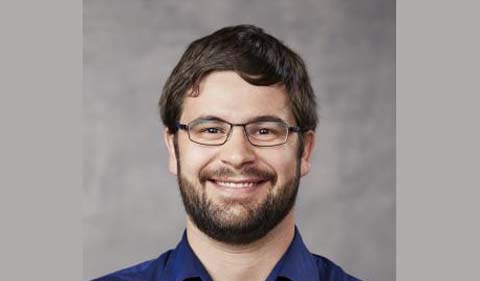The Geological Sciences Colloquium Series presents Dr. Jonathan Calede discussing “Whack-a-gopher: Why did burrowing rodents pop up during the Oligocene” on Friday, April 5, at 2 p.m. in Clippinger 205.
Calede is Assistant Professor of Evolution, Ecology and Organismal Biology at The Ohio State University – Marion.
Abstract: Rodentia is the most species-rich order of mammals alive today; it is also one of the most ecologically diverse. Modern rodents range in size over four orders of magnitude and eat diets ranging from grass to carnivory. They also run, hop, dig, swim, climb, and glide. These diverse ecologies have evolved repeatedly across rodent families. One such ecology, burrowing, has independently evolved in multiple families and became the dominant specialized locomotory ecology in rodents as far back as 29 million years ago. My lab seeks to better understand the rise in diversity of burrowing rodents and the role of ecological innovations in their success. Much of our work focuses on the Geomyidae (pocket gophers) and Heteromyidae (kangaroo rats, pocket mice, and their relatives), two species-rich sister families of rodents that display extreme variation in skull morphology.
I will present an analysis of the disparity in cranial morphology in this clade that demonstrates that extinct gophers represent a unique morphology absent among extant relatives. This analysis also supports cranial morphology as taxonomically informative and has helped us develop the first phylogenetic framework for the extinct subfamily Entoptychinae, an extinct group of gophers. Our preliminary results support a rapid rise in diversity of entoptychines around 29 to 25 million years ago, concurrent with the spread of open habitat environments across the western United States. In an effort to link these patterns of diversity and potential mechanistic explanations, we have been developing and applying morphological proxies of locomotion to infer burrowing behavior in fossil gophers and shed light on the evolution of fossoriality within this group. Our results support the repeated evolution of burrowing within Entoptychinae and suggest an important role of ecological partitioning in the pattern of succession of burrowing rodent clades through the Oligo-Miocene.
Upcoming Colloquia
Audrey Sawyer of The Ohio State University on “Surface water-groundwater exchange and nitrogen fate in tidal rivers” on April 12 at 2 p.m. in Clippinger 205.
Chris Atchison of University of Cincinnati on “Moving beyond tradition: Rethinking field-based teaching and learning in the geosciences” on April 19 at 2 p.m. in Clippinger 205.




















Comments